Border Terrier Dog Breed
The Border Terrier, originally from the rural areas straddling England and Scotland, appeals to dog lovers and those looking for a new pet. This breed is easily recognized by its unique otter-like head and wiry coat that sheds rain and dirt. It’s versatile, able to hunt pests or curl up with the family, and despite its tiny stature, the Border Terrier is sturdy and friendly, which explains its lasting appeal.
When considering a Border Terrier, it’s essential to look at its endearing qualities and energy, as well as its specific care needs and health issues. Understanding this breed’s history, temperament, and maintenance will show you what life with a Border Terrier is like.
Key Takeaways
- Border Terrier origin: between England and Scotland.
- Recognizable: otter-like head, wiry coat.
- Versatile: hunts pests and enjoys family companionship.
Quick Facts
The Border Terrier, admitted into the American Kennel Club in 1930, belongs to the Terrier Group. This dog is well-known for its solid health and may live between 12 to 15 years. It’s a spirited yet loving breed.
The Border Terrier is always in high spirits and enjoys life, which makes it an excellent pet for various households. Its coat is rough and easy to care for, in colors like wheaten, grizzle tan, or red. They can adapt well to different homes, including apartments, but they’re energetic and need daily physical activity and mental stimulation.
People considering this breed should remember their need for regular play and walks. They should also be prepared for the dog’s tendency to bark at new people, which can be managed with proper training to ensure a peaceful home environment.
Border Terrier Dog Breed Pictures
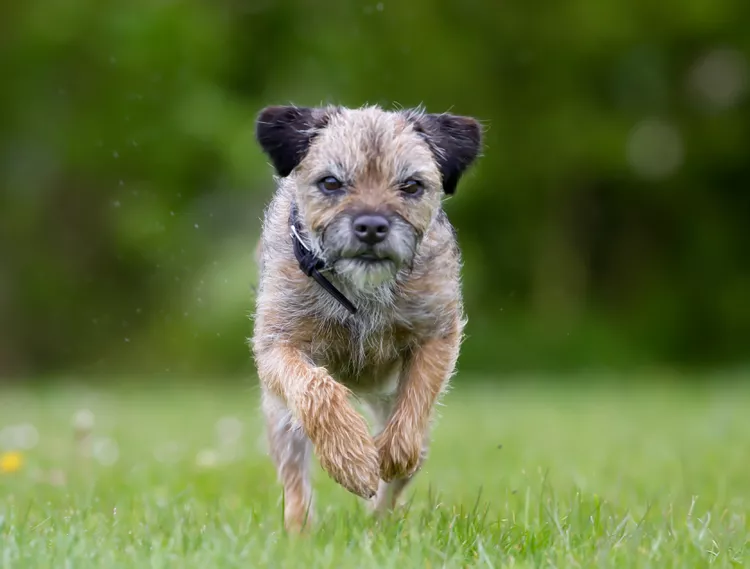
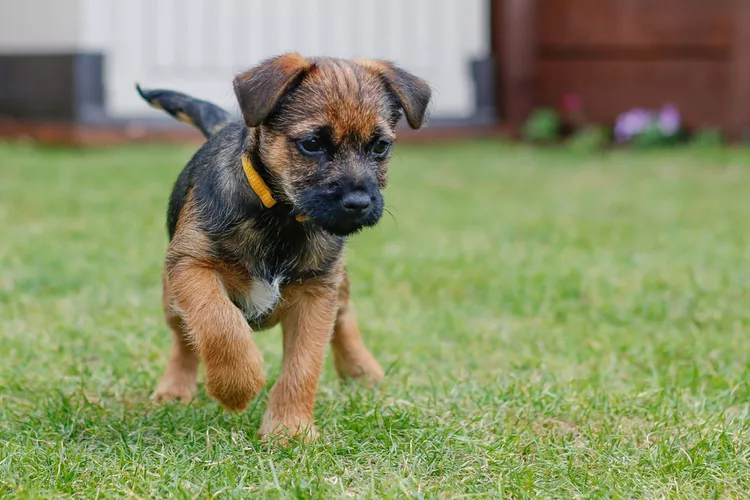
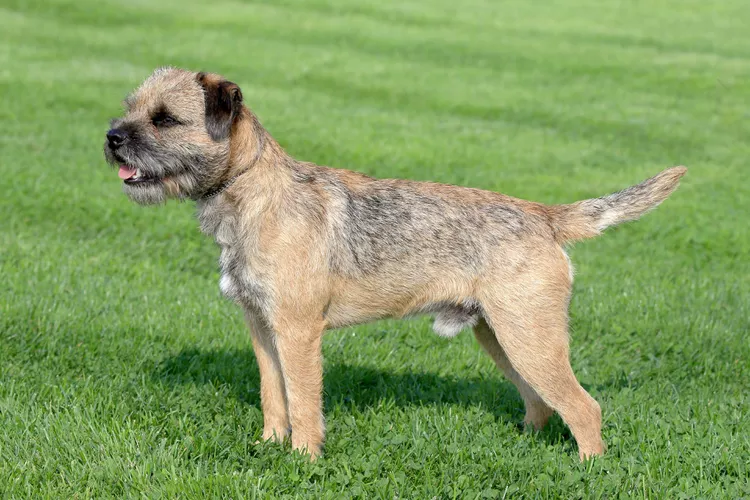
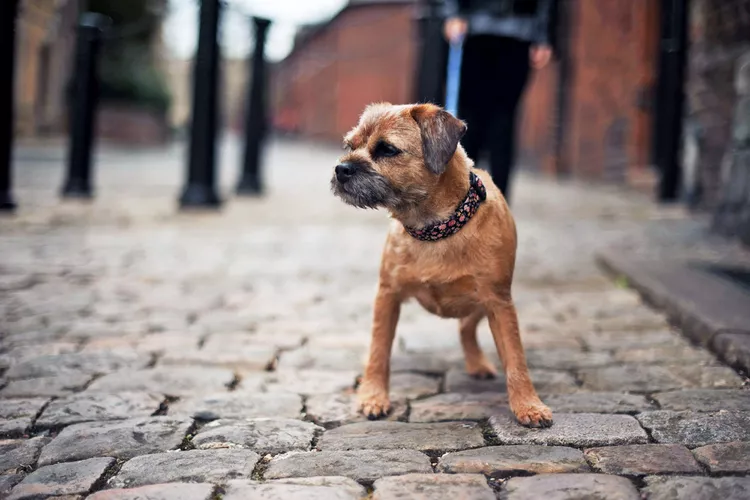
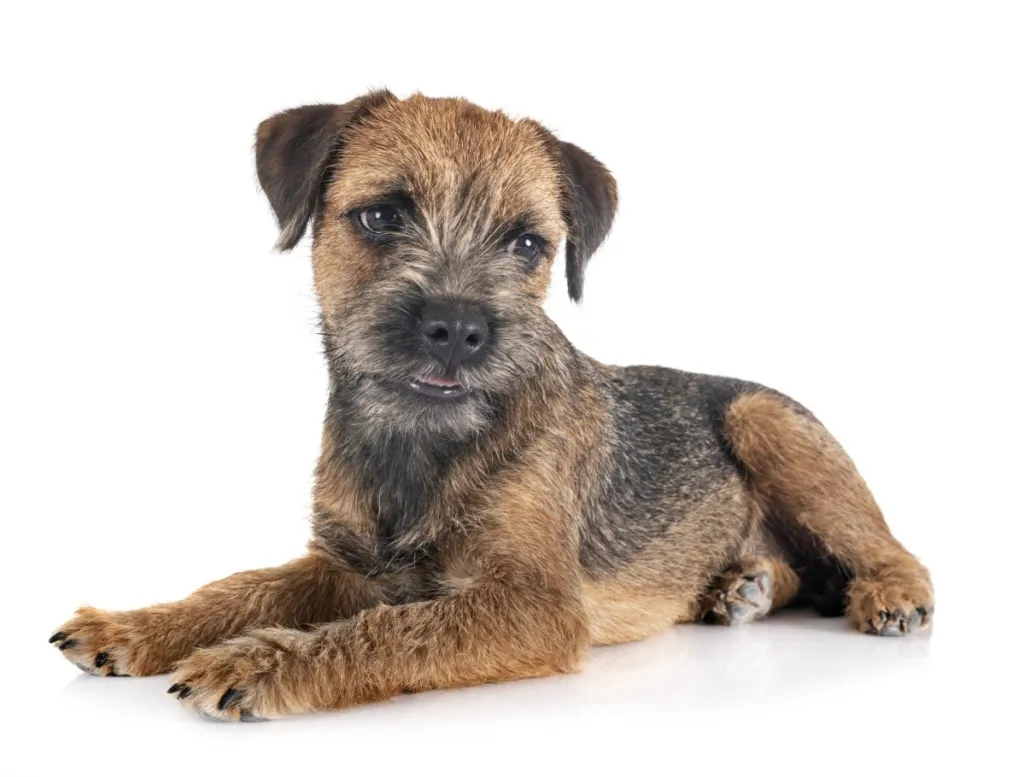
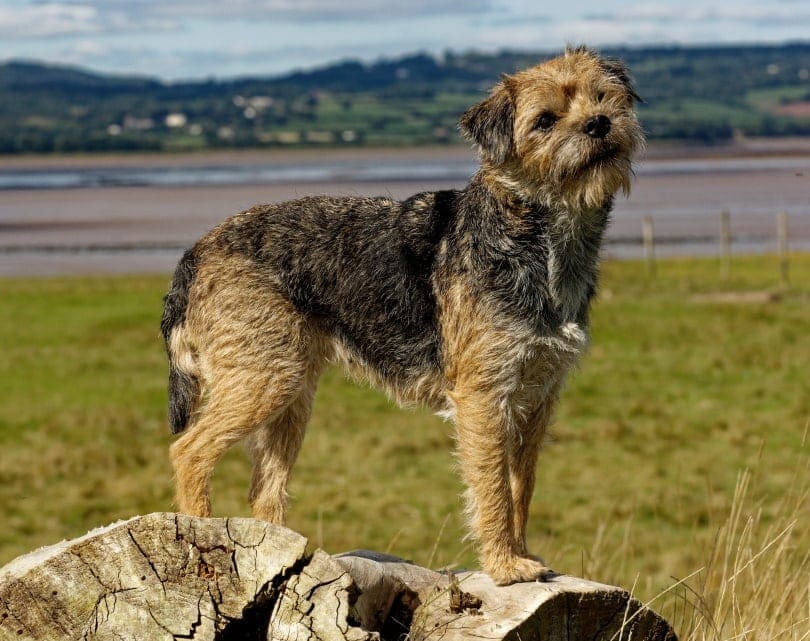
Overview
Building on its reputation as a lively and affectionate companion, the Border Terrier presents a unique blend of tenacity and gentleness, making it a versatile breed suited for various lifestyles. Originating from England and Scotland, this small and robust canine is characterized by its friendly disposition and high trainability.
Boasting a life expectancy of 12-15 years, the Border Terrier’s double coat, featuring a wiry exterior and soft undercoat, requires regular grooming to maintain optimal condition and comes in hues such as wheaten, grizzle tan, or red.
The breed necessitates ample exercise and mental engagement, flourishing in environments where they can participate in regular outdoor activities. Prospective owners should note health concerns like hip dysplasia, heart defects, and dental malocclusions and explore adoption from rescue groups or seek responsible breeders.
Border Terrier Personality
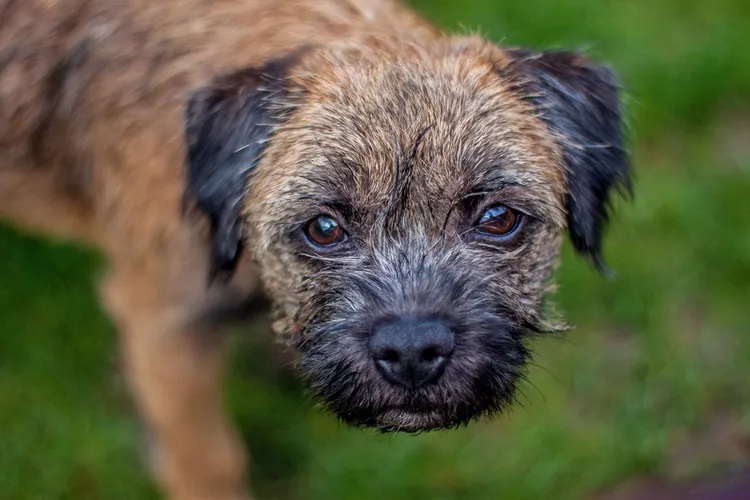
Border Terriers are adored for their bravery and friendly nature, making them favorites among many dog lovers. These dogs are recognized for their spirited and loving personalities, allowing them to thrive in city apartments and country homes. They’re versatile, but Border Terriers are energetic and need good exercise and mental activity to stay healthy and avoid behavior problems.
Detailing Their Characteristics:
| Trait | Description |
|---|---|
| Coat | Wiry, sheds minimally, and regular grooming is needed |
| Color | Comes in shades like wheaten, grizzle and tan, or red |
| Energy & Exercise | Very energetic, requires lots of activity and brain games |
The Border Terrier Club of America is dedicated to maintaining the breed’s authentic qualities and encourages breeding with care to avoid health complications.
In crafting the perfect environment for a Border Terrier, one should consider their need for regular grooming due to their wiry coat. These dogs come in colors like wheaten, grizzle tan, or red, which can influence their appearance. They have lots of energy and need physical and mental activities to stay engaged and healthy. It’s essential for their well-being and to prevent potential behavioral issues. The Border Terrier Club of America works to keep the breed’s unique features intact and supports responsible breeding to minimize health risks.
Pet Parents Origins and Development
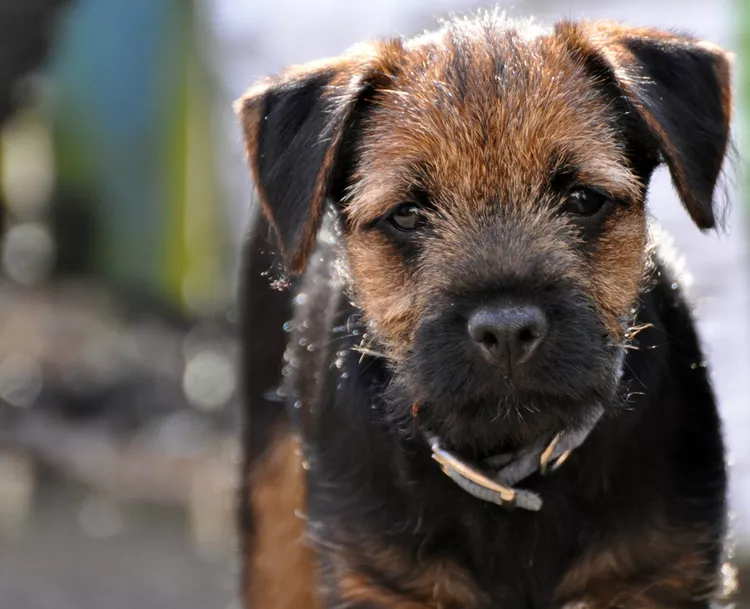
The Border Terrier originated in the challenging environment of the Anglo-Scottish border. This breed became valued for its skill in hunting small game. Over time, breeders selected traits that suited the needs of those hunting foxes and managing farms. The breed’s recognition officially began in the early 20th century, leading to its current status in the field and at dog shows.
- Early Breed History
- Began in the border areas between England and Scotland
- Initially bred for fox hunting and reducing the number of pests
- Key Ancestral Traits
- Innate hunting instincts from its early use in hunting
- Robust build and protective coat for outdoor life
- Friendly nature, making them good workers and pets
- Development Milestones
- Recognized by the Kennel Club in 1920
- Gained popularity in the United States and was recognized by the American Kennel Club in 1930
- Standards for the breed were established, leading to its role as a companion.
The Border Terrier’s start was tied to the demanding terrains at the border of England and Scotland, where its prowess in pursuing small prey was invaluable. Selective breeding over time sharpened the Border Terrier’s traits to meet the demands of those hunting foxes and rural farmers. Its formal acknowledgment and fundamental principles in its development have cemented its role in practical hunting and competitive shows.
- Early History of the Breed
- Emerged from the border regions of England and Scotland
- First bred to chase foxes and manage rodents
- Thrived in the rugged terrain and climate of the area
- Inherited Characteristics
- Instinct for hunting from its early days
- Hardy structure and dense coat for outside tasks
- Sociable nature, allowing it to be both a work dog and a friend
- Notable Achievements
- The Kennel Club recognized the breed in 1920
- Came to the United States and received American Kennel Club recognition in 1930
- Standardization of the breed and a rise in popularity as pets
Early Breed History
The Border Terrier originated from the challenging terrains of England and Scotland. Known initially as the Coquetdale or Redesdale Terrier, this breed was designed for its skill-appropriate size, which made it perfect for aiding in fox-hunting and pest control tasks.
The breed came to be in Northumberland during the late 1700s, developed explicitly with longer legs to keep up with horses and foxhounds and a smaller petite that could squeeze through tight foxholes. The Border Terrier’s lineage includes connections to the Bedlington Terrier and Dandie Dinmont Terrier.
In 1920, The Kennel Club recognized it officially, highlighting the breed’s unique traits and hunting prowess. While the Border Terrier is known for its effectiveness in the field, it is also prone to some inherited health conditions yet generally maintains a solid, lengthy lifespan.
Key Ancestral Traits
The Border Terrier, with its beginnings in England and Scotland, was shaped to fit perfectly into the lifestyle of rural hunts. This breed was skilled in tracking and eliminating foxes in the hills, showcasing its toughness and ability to withstand inclement weather. It shares its heritage with the Bedlington and Dandie Dinmont Terriers.
Initially known as the Coquetdale or Redesdale Terrier, it got its current name from its work with the Border Hunt.
This dog was bred with proportions that allowed it to keep up with horses and dogs, yet its size was compact enough to squeeze through narrow fox holes. Its physical design, including a wide broad and a short snout, was crafted specifically for the demands of a working terrier. These features testify to the breed’s functional heritage and effectiveness in traditional countryside roles.
Development Milestones
The Border Terrier, hailing from the challenging landscapes of England and Scotland, was skillfully bred for hunting and controlling pests. Initially known as the Coquetdale Terrier or Redesdale Terrier, the name was changed to reflect its close ties with the Border Hunt. This breed was shaped for practicality; by the end of the 19th century, it had developed the agility needed to keep up with horses and foxhounds, all sizes that allowed it to chase prey underground.
The Kennel Club officially recognized the Border Terrier as a unique breed in 1920, confirming its established status. This breed is known for its sturdy health and typically ages 14 years. However, it is prone to some genetic health issues, including hip dysplasia and heart problems.
Physical Dimensions
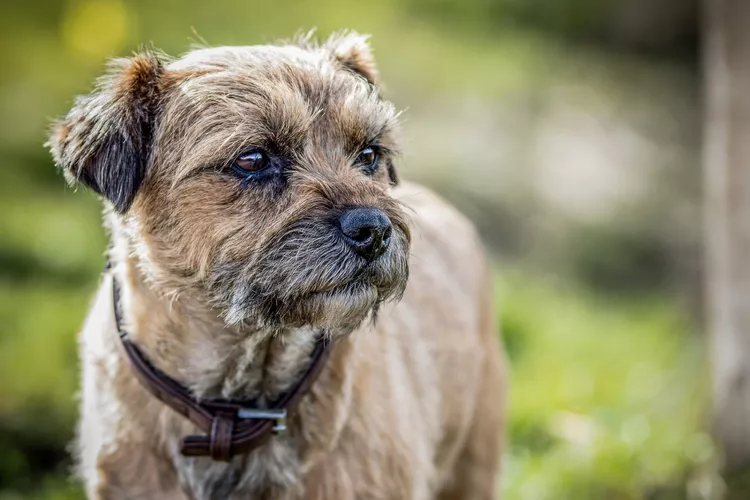
Understanding the physical characteristics of the Border Terrier breed is crucial as it relates to their overall health and effectiveness. Breed standards are set to maintain consistency and to give prospective owners an idea of what to expect.
The details below highlight the critical physical dimensions of Border Terriers:
- Size Specifications
- Height: Typically stands between 10 and 16 inches at the shoulder.
- Weight: Adult males weigh between 11.5 and 15.5 pounds, while females weigh between 11 and 14 pounds.
Weight to Height Balance
- Proportionality: A harmonious balance between weight and height is ideal.
- Breed Standards: Adheres to the breed’s defined size criteria.
Body Features
- Muscle Tone: Strong muscles support agility and stamina.
- Physique: Their build is robust and compact, a nod to their heritage as working dogs.
Average Size Range
Border Terriers are a small to medium-sized breed. Males typically weigh between 13 and 15.5 pounds and stand 12 to 15 inches tall. Females are usually smaller, with weights ranging from 11.5 to 14 pounds and heights between 11 and 14 inches.
These dogs have a compact build, making them a good fit for different homes, such as apartments or houses with yards. The weight and height of Border Terriers make them easy to manage, which is something to think about if you’re looking to add a new pet to your family.
They are agile and robust, ideal for both being a companion and for more active owners. Those interested in this breed need to know about their size to meet their needs adequately.
Weight and Height
Understanding the specific physical dimensions of Border Terriers, including their weight and height, is crucial for prospective owners to ensure these active dogs are kept healthy and fit.
Females of this breed typically stand at a height of 10-11 inches at the withers, while males are slightly taller at 11-12 inches.
The weight range for females is approximately 11.5-14 pounds, and males usually weigh between 13-15.5 pounds.
The Border Terrier’s medium-sized, sturdy build contributes to its reputation as a compact and agile member of the dog breeds. These characteristics make them adept at activities requiring high levels of maneuverability and agility.
To maintain their well-being, owners must regularly monitor their weight and height, ensuring the dogs remain within a healthy and proportionate range.
Body Structure Characteristics
The Border Terrier is a small but sturdy dog well-suited for active tasks. Its body is designed for speed and stamina, with long legs just right for size. These features help it keep up with larger hunting dogs and get through tight spaces when following foxes. The breed’s coat comprises a tough top layer and a warm underlayer, which keeps it safe from bad weather and thickets. The most common colors for their fur are wheaten, grizzle tan, or red.
Owners should know that Border Terriers can have health issues like hip dysplasia, heart problems, and seizures. These issues could affect the dog’s ability to be active and healthy. It’s essential for anyone considering this breed to be aware of these potential health concerns.
Coat Length Variation
The Border Terrier has a coat that’s just the right length—not too long or short. Its wiry outer layer keeps the dog clean by shedding dirt quickly, so you don’t have to bathe this pooch too often.
The thick undercoat keeps it warm when the weather turns cold. When it comes to grooming, you’ll only need to hand-strip the coat a couple of times a year to get rid of dead hair and maintain its texture. And, unlike some other breeds, the Border Terrier doesn’t leave much hair around the house.
This makes the breed a convenient choice for people who are always on the go or live in places with changing seasons.
Tail and Ear Shape
The Border Terrier sports a coat that’s not just for looks—it’s also functional. But what sets this breed apart is its V-shaped ears and the tail that stands tall. These ears are more than just a signature look; they help the dog hear better. The tail is short, stands up from the back, and curves just a bit. This makes the dog look ready for anything full of energy.
The way a Border Terrier carries its tail, often said to be ‘gaily,’ shows off its lively spirit. The ear and tail design work together to give the dog a sturdy, well-balanced look that’s easy to recognize. This look is a big part of why the breed is known for being agile and always up for some action.
Border Terriers Temperament Traits
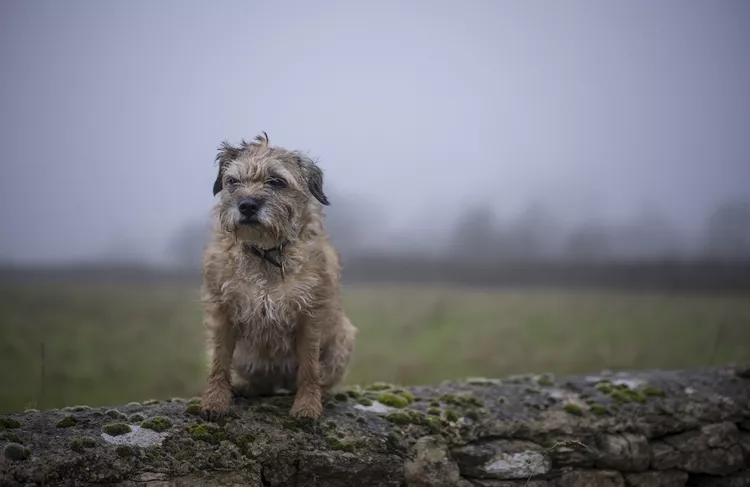
The Border Terrier exhibits a range of temperament traits that are crucial to understanding them. These dogs are known for being good-natured and eager to learn, which makes training them a rewarding experience. They also have high energy levels that must be managed to prevent behavioral issues.
Understanding Temperament
Border Terriers are affectionate and loyal, forming strong bonds with their owners. Their confidence and upbeat attitude make them a joy to be around.
Socializing Your Dog
They’re friendly with both people they know and newcomers, provided they’ve been properly introduced. With the proper socialization, they can get along well with other animals.
Training Your Border Terrier
Their intelligence means they pick up on commands quickly, making them relatively easy to train—consistent training results in a well-behaved dog, which benefits both the dog and the owner.
Defining Temperament Qualities
Border Terriers are known for their friendly, obedient, and lively nature. These traits make them excellent family pets and great for people who lead an active lifestyle. These cheerful dogs are also known for their strong connection with their owners, thanks to their loving and warm personality.
They need plenty of exercise and mental stimulation to stay healthy and happy. Their alertness to new arrivals is helpful, yet they are not overly noisy, showing a balanced protective behavior. However, they have a penchant for digging and an independent side, so early and consistent training and socialization are essential.
Social Interaction Tendencies
Border Terriers thrive on regular exercise and mental stimulation. This is key to understanding their behavior and overall temperament. Known for their friendly and intelligent nature, these dogs fit well into many families. They can live happily in smaller homes if they get enough physical activity.
They show a lot of love for their human families and get along with other dogs. Border Terriers have a moderate energy level that requires daily exercise. They are good at following commands and can be trained. However, they like to dig, so clear rules and training are essential to manage this behavior.
Response to Training
Border Terriers are known for their trainability and responsiveness to commands due to their intelligence and eagerness to please. Initially bred for hunting, these dogs are hardworking and adapt well, which makes them good at learning. They get along well with other dogs because they’re obedient and not too aggressive.
Even though they like to be independent and might dig occasionally, Border Terriers follow commands quickly. Keeping them physically active is crucial to their sharpness, and their coats are easy to care for since they repel dirt and don’t smell much. Official kennel clubs recognize the Border Terrier as easy to train, which is part of their well-known history.
Managing Energy Levels
Border Terriers have a natural zest for life, thanks to their history as companions in fox hunts, where they kept pace with horses and hounds. This breed needs regular exercise and mental stimulation to stay happy and healthy.
Positive reinforcement is the best way to direct their energy into good behaviors and avoid issues related to boredom or frustration. They’re clever escape artists because of their strong prey drive, so a well-fenced yard is necessary.
Regular physical activity and brain games are great for keeping their sharp minds and bodies in shape.
Behavioral Consistency
The Border Terrier is known for its steadfast, brave, and friendly nature, shaped by years of breeding for hunting. These dogs hail from the border regions of England and Scotland, and their behavior remains consistent due to their history as hunters of foxes and pests. They needed to be persistent and capable of following their prey underground, which they do with surprising determination for their size.
Despite their approachable nature, Border Terriers have a strong instinct to chase, which can be mistaken for aggression towards smaller animals. To prevent any issues, it’s essential to socialize them from a young age. Their behavior around people is generally warm, but they also show notable boldness and perseverance that speaks to their hunting heritage.
Wellness and Longevity Considerations
The health and longevity of Border Terriers are strongly shaped by their genes, what they eat, and how much they move. Screening for health issues early on is crucial to tackle breed-specific problems effectively. Feeding them right and keeping them active is vital to boosting their lifespan and well-being.
Health Screenings Are Critical
Spotting inherited health issues early is vital so Border Terriers can live longer, healthier lives. Setting up regular vet visits allows for ongoing monitoring and health management.
Proper Diet Is Non-Negotiable
Border Terriers need a proper diet for their energy levels to stay fit. Maintaining their weight and ensuring they get all the necessary nutrients is part of responsible pet care.
Regular Exercise Is a Game Changer
Exercise doesn’t just keep a Border Terrier’s body healthy; it also keeps their mind sharp. It helps with behavior, supports their joints, and keeps them agile as they age.
Common Health Screening
Regular health check-ups are crucial in maintaining the well-being of Border Terriers. These screenings catch and manage common genetic issues like hip dysplasia, heart problems, and seizures early on. Early detection through screenings can lead to more effective treatments and better outcomes for these dogs. It is advised to get health clearances to lower the chances of passing on these hereditary conditions.
Taking these preventative steps helps keep Border Terriers healthy and full of life. Early interventions can halt the progression of certain diseases. Therefore, consistent check-ups and veterinary visits are vital for the long-term welfare of these dogs.
This underscores the importance of health screenings in keeping our canine companions healthy.
Diet and Nutrition Essentials
Regular health checks are vital for spotting hereditary conditions in Border Terriers. Providing a diet that supports their health and lifespan is just as key. A balanced diet suited to their size, weight, and energy needs is fundamental for their well-being. It’s essential to feed them high-quality dog food in amounts that work their metabolism and energy output to avoid excess weight.
Daily exercise, around 20-40 minutes, is crucial for keeping them fit and mentally sharp. Interactive feeding toys can keep their minds active and contribute to their happiness.
Consistent grooming, especially hand stripping the coat twice a year, helps maintain their health and prevents tangled fur.
Exercise Impact on Lifespan
Regular exercise and mental stimulation are key factors in extending the life of a Border Terrier. These activities not only keep the dog physically fit but also keep their mind sharp. Taking your Border Terrier for energetic walks, playing games that require interaction, and investing time in obedience training are all vital for maintaining your pet’s health and alertness. Engaging in these activities regularly can help prevent weight problems, reduce the risk of joint disorders, and fend off other potential health issues.
Various exercise opportunities also benefit a Border Terrier’s emotional health. It helps to alleviate stress and anxiety, leading to a more even-tempered dog. Dog owners should make sure that their Border Terrier gets enough physical activity. This will improve their pet’s overall well-being and contribute to a longer, healthier life.
Grooming and Maintenance Requirements
Caring for the coat of a Border Terrier is vital for their overall health and happiness. A good grooming routine includes various steps, from how often you brush your coat to how you should handle nail care. Here’s what you need to know to keep your Border Terrier in top shape:
Coat Brushing: Brush your dog’s fur once a week to get rid of dirt and loose hair. Twice a year, you should hand-strip their coat to maintain its texture.
Bath Time and Skin: Don’t bathe your Border Terrier too often; a gentle dog-specific shampoo will do the trick and help preserve their natural skin oils. Always check for any skin issues or bugs when you groom them.
Nail Care: Trim your dog’s nails monthly to avoid overgrowth and potential health issues. Keep an eye out for any signs of infection or odd-looking nails.
Coat Brushing Frequency
To keep a Border Terrier’s unique double coat in top shape, it’s best to brush it once a week. This helps to get rid of shed hair and stops knots from forming. These weekly grooming sessions are crucial for their coat’s health.
The Border Terrier has a harsh topcoat and a warm undercoat that needs care. Brushing does more than smooth out the fur; it also gets the skin working and spreads the dog’s natural oils for a shiny coat.
Because Border Terriers love being outside, they often pick up dirt and small bits of plants in their fur. Regular brushing is an excellent way to stop skin problems before they start and keep the dog’s coat ready for any weather.
Bathing and Skin Care
Border Terriers have a coat that’s easy to look after and naturally keeps dirt at bay, but they still need a bath now and then. This helps keep their skin healthy and their unique coat in top condition. They have a particular jacket that’s tough against the weather and doesn’t catch dirt easily. However, twice a year, it’s good to hand strip their coat to keep it healthy and cut down on hair around the house.
Regular brushing is crucial to avoiding knots and keeping their coat looking great. These energetic dogs might need more grooming if they’re often out digging, which they love to do. Sticking to an intelligent grooming plan is more than just about looks; it’s also about their health and happiness.
Nail Trimming Essentials
Trimming your Border Terrier’s nails is critical to keeping them healthy and comfortable. If their nails get too long, it can hurt them or mess up the way they walk, which can cause problems with their bones.
Getting your dog used to having its nails trimmed from a young age can make the process a lot easier. Using sharp nail clippers for dogs to get a clean cut and avoid splitting or breaking the nails is essential.
You also need to know where the quick is – the sensitive part of the nail with nerves and blood vessels. If you’re not sure how to trim your dog’s nails safely, it’s a good idea to ask a groomer or vet to do it. They have the skills to do it without hurting your dog.
Ear Cleaning Protocol
For Border Terriers’ grooming, keeping their ears clean is a must. Start with a dog-specific ear-cleaning solution to wash the outer ear and earflap. Avoid using cotton swabs or sharp items that could damage the ear canal. Instead, opt for a soft, clean cotton ball or cloth moistened with the solution to wipe away dirt and excess wax gently.
Watch for signs of an infection like redness, swelling, or a foul smell; if you see these, contact a vet immediately.
After cleaning, ensure the ears are dehydrated to prevent any issues from trapped moisture.
Regularly cleaning your dog’s ears is essential for their overall ear health.
Seasonal Shedding Management
A consistent grooming routine is vital to manage seasonal shedding for Border Terriers. Owners should hand strip their pets twice yearly to keep their coats wiry and colorful.
Regular care is essential for the coat’s health and to protect it against the elements. Use a slicker brush often to remove loose and dead hair.
Keep baths to a minimum and use a gentle dog shampoo after stripping to retain the coat’s oils.
If you’re new to hand stripping, consider hiring a professional groomer who knows the Border Terrier’s coat. This will help keep it in top shape during shedding season.
Nutritional Guidelines
For Border Terriers to stay healthy, following nutritional guidelines designed for their specific needs is crucial. They require regular portioned meals to keep their metabolism balanced and to avoid becoming overweight, which is a widespread problem in this breed. Monitoring and addressing food allergies is vital to improve their overall well-being.
Dietary Needs
Border Terriers need high-quality proteins to keep their muscles strong, the right amount of fats for sustained energy and a shiny coat, and fiber-rich carbs to aid digestion.
Meal Schedule
Feeding them on a set schedule helps manage their caloric intake. The amount they eat should change with their age, weight, and how active they are. Be mindful of treats to avoid feeding them too much without realizing it.
Managing Allergies
If a Border Terrier has food allergies, an elimination diet can help figure out the problem. They might need exceptional hypoallergenic food, and watching for adverse reactions is essential whenever they try something new.
Dietary Requirements
Border Terriers are lively dogs that need a well-balanced diet to maintain energy and health. Their meals should have the right mix of proteins, carbs, fats, vitamins, and minerals. It’s vital to adjust the food based on the dog’s age and how active they are. Since they love to stay active, their meals should provide steady energy.
Chew toys are great for these dogs, not just for their need to chew but for keeping their teeth clean and strong. These toys play a part in their dental health, helping to control tartar and keep their teeth in good shape. This goes hand in hand with their nutritional needs.
Feeding Frequency
When feeding Border Terriers, setting a regular feeding schedule is vital. This helps prevent weight gain and keeps them from getting bored, which these dogs often struggle with. Keeping them in a secure area during meals is wise because they can escape. Rewards-based training can make mealtime routines more effective and keep your dog’s diet on track.
The feeding plan should also be tailored to the dog’s unique metabolic needs, considering how active they are. Before bringing a Border Terrier into your home, understand their dietary needs and how they fit your lifestyle.
Staying true to these feeding practices is vital for your dog’s health and happiness.
Food Allergies Management
Border Terrier owners must proactively address their dogs’ food allergies. The critical step is pinpointing and cutting out the ingredients that cause allergic reactions. These often include specific proteins and grains.
A good strategy is to feed your dog a varied diet that changes protein sources. Look for foods that have only a few ingredients or are labeled as hypoallergenic. It’s vital to work closely with a vet. They can help with allergy tests or food trials to find the culprits.
Understanding pet food labels helps ensure you don’t give your dog something that could trigger an allergy. Keeping a detailed food diary is also helpful. Note what your pet eats and how they react to different foods. This will help you determine what works best for managing your Border Terrier’s allergies.
